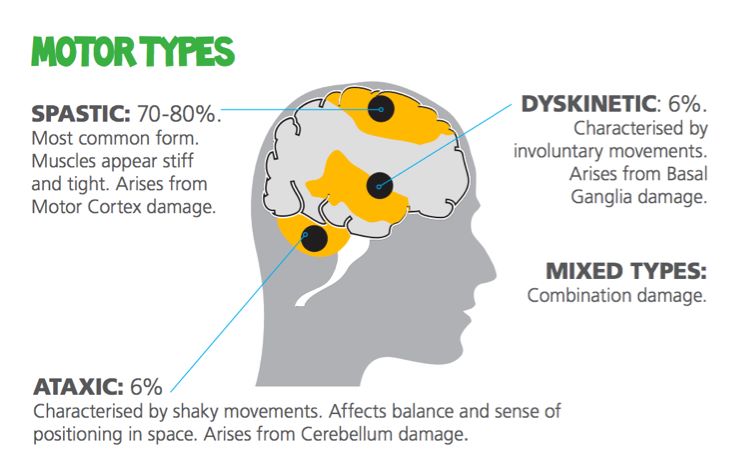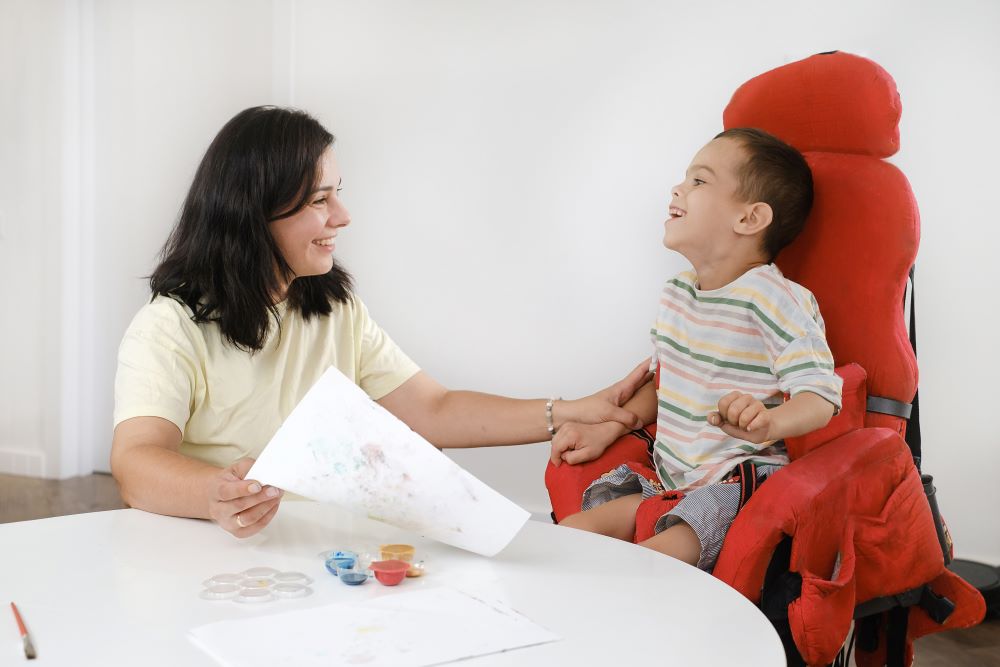Last Updated on December 2, 2024 by Michelle Wan
Mixed cerebral palsy is a type of cerebral palsy (CP) where an individual exhibits symptoms of more than one form of CP. This condition occurs due to damage to multiple areas of the brain, often caused by complications during pregnancy, labor, or delivery. Mixed CP is relatively rare but can be one of the most complex types, combining the challenges of spasticity, involuntary movements, and balance issues.
When mixed cerebral palsy results from a birth injury, it is often due to preventable factors such as oxygen deprivation, trauma during delivery, or medical negligence. In this article, we’ll explore the causes, symptoms, and treatment options for mixed CP, as well as how families can seek support and justice.
Understanding Mixed Cerebral Palsy
Cerebral palsy is classified into four main types based on the area of the brain affected and the resulting symptoms:
- Spastic CP: Characterized by muscle stiffness and difficulty with movement.
- Dyskinetic CP: Marked by involuntary, jerky, or writhing movements.
- Ataxic CP: Involves poor balance and coordination.
- Mixed CP: Combines symptoms of two or more of the above types.
In cases of mixed CP, the most common combination is spastic-dyskinetic cerebral palsy, where individuals experience both muscle stiffness and involuntary movements. The severity and specific symptoms depend on the extent and location of the brain damage.

Causes of Mixed Cerebral Palsy Birth Injury
Mixed cerebral palsy often results from brain damage that affects multiple areas controlling motor function. The damage may occur before, during, or shortly after birth due to the following factors:
Birth Asphyxia (Oxygen Deprivation)
Prolonged oxygen deprivation during labor and delivery can cause widespread brain damage, leading to mixed CP and conditions like umbilical cord prolapse, placental abruption, or delayed cesarean delivery increase the risk of birth asphyxia.
Trauma During Delivery
The improper use of tools like forceps or vacuum extractors can cause physical trauma to the baby’s brain, affecting multiple regions.
Premature Birth
Premature babies are more vulnerable to brain injuries due to underdeveloped organs and an increased risk of complications like intracranial hemorrhage.

Infections
Maternal infections such as rubella or cytomegalovirus can interfere with brain development during pregnancy.
Medical Negligence
Failure to monitor fetal distress, delayed responses to complications, or mishandling during delivery can lead to preventable brain injuries.
Symptoms of Mixed Cerebral Palsy
The symptoms of mixed CP vary widely depending on the combination of CP types and the severity of brain damage. Common symptoms include:
Motor Symptoms:
- Muscle Stiffness (Spasticity): Difficulty moving due to tight, rigid muscles.
- Involuntary Movements (Dyskinesia): Writhing, jerking, or twisting movements that are uncontrollable.
- Balance and Coordination Issues (Ataxia): Struggles with standing, walking, or performing precise movements.
Additional Challenges:
- Difficulty with Speech and Swallowing: Impaired control of facial and tongue muscles.
- Seizures: Epileptic episodes are common in severe cases.
- Cognitive Impairments: Ranging from mild learning difficulties to more severe intellectual disabilities.
- Joint Deformities: Over time, muscle tightness can lead to contractures or joint misalignment.

Diagnosing Mixed Cerebral Palsy
Diagnosing mixed CP requires a thorough evaluation to identify the symptoms and the areas of the brain affected. Common diagnostic steps include:
Developmental Milestone Monitoring:
Delays in sitting, crawling, or walking can indicate potential CP.
Neurological Assessments:
Detailed evaluations of muscle tone, reflexes, and movement patterns.
Imaging Tests:
MRI or CT scans to detect brain abnormalities or injuries.
Genetic Testing:
In rare cases, testing may be done to rule out other genetic conditions.

Treatment Options for Mixed Cerebral Palsy
While there is no cure for mixed CP, a multidisciplinary approach can help manage symptoms and improve quality of life. Treatment plans are tailored to address the unique combination of symptoms.
Physical Therapy
It focuses on improving mobility, balance, and strength and it includes stretching exercises to reduce spasticity and enhance range of motion.
Occupational Therapy
Teaches adaptive strategies for daily tasks, such as eating, dressing, or writing and recommends assistive devices like specialized utensils or grips.
Speech Therapy
Addresses communication difficulties and swallowing challenges and incorporates augmentative and alternative communication (AAC) devices when needed.

Medications
- Muscle Relaxants: Medications like Baclofen or Diazepam reduce muscle stiffness.
- Botox Injections: Temporarily relax overactive muscles.
- Anti-Seizure Medications: Prescribed for individuals experiencing seizures.
Assistive Devices
Wheelchairs, walkers, or orthotics improve mobility and independence.
Communication aids support speech and language development.
Surgical Interventions
- Orthopedic Surgeries: Correct joint deformities or muscle contractures.
- Selective Dorsal Rhizotomy (SDR): Reduces spasticity by cutting overactive nerve roots.
Emotional and Financial Challenges for Families
Caring for a child with mixed CP can be emotionally and financially demanding. Families often face:
- Therapy Costs: Physical, occupational, and speech therapies are essential but expensive.
- Medical Expenses: Ongoing care, medications, and adaptive equipment add to the financial burden.
- Emotional Stress: Balancing caregiving responsibilities with work and family life can lead to caregiver burnout.
Legal Options for Mixed Cerebral Palsy Caused by Birth Injuries
If mixed cerebral palsy results from medical negligence, families may be eligible to pursue compensation to cover medical expenses, therapy costs, and adaptive equipment.

A birth injury attorney can help by:
- Investigating the circumstances of the birth.
- Identifying instances of negligence, such as delayed intervention or failure to monitor fetal distress.
- Securing financial compensation to support long-term care needs.
How Thomas & Wan LLP Can Help
At Thomas & Wan LLP, we understand the profound impact mixed cerebral palsy has on families. With decades of experience handling birth injury cases, our team is dedicated to helping families secure justice and the financial support needed to provide the best care for their child.
Mixed cerebral palsy is a complex condition that presents unique challenges for children and their families. Understanding its causes, symptoms, and treatment options empowers parents to advocate for their child’s needs and access the resources necessary for their care.
If your child’s mixed cerebral palsy was caused by a preventable birth injury, contact Thomas & Wan LLP today for a free consultation. Let us help you secure the justice and compensation your family deserves, so you can focus on providing the care and support your child needs.




